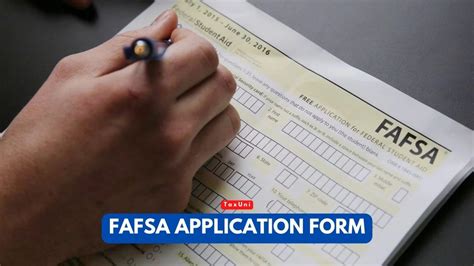Introduction
Are you a student planning to pursue higher education in the upcoming academic year? If so, you’ll need to complete the Free Application for Federal Student Aid (FAFSA®) to determine your eligibility for financial aid. This guide will provide you with a step-by-step walkthrough of the FAFSA application process for the 2024-2025 academic year, including important deadlines and tips to maximize your aid eligibility.

Deadlines and Timeline
- October 1, 2023: FAFSA opens for the 2024-2025 academic year
- June 30, 2025: Federal FAFSA deadline
- State and school deadlines vary: Check with your specific institution for their deadlines
Eligibility Requirements
To be eligible for federal student aid, you must meet the following requirements:
- Be a U.S. citizen, permanent resident, or eligible non-citizen
- Be enrolled in or accepted to an accredited college or career school
- Have a valid Social Security number (with exceptions for certain non-citizens)
- Not be in default on a federal student loan
- Meet Satisfactory Academic Progress (SAP) standards
Documents You’ll Need
Before you start the FAFSA application, gather the following documents:
- Your Social Security number
- Your driver’s license or state ID card
- Your parents’ Social Security numbers and income information (if you’re dependent)
- Your tax returns for the previous year
- Records of any untaxed income, such as child support or veteran’s benefits
Step-by-Step Guide to Completing the FAFSA
Step 1: Create an FSA ID
Visit the Federal Student Aid website (https://studentaid.gov) and create a username and password to get your FSA ID. This serves as your electronic signature and allows you to sign and submit the FAFSA online.
Step 2: Gather Your Information
Collect the necessary documents listed above before starting the FAFSA application.
Step 3: Begin the Application
Go to the FAFSA website (https://studentaid.gov/h/apply-for-aid/fafsa) and start the application. Enter your FSA ID and answer the demographic questions about yourself and your family members.
Step 4: Income and Asset Information
Provide tax return information and untaxed income for both yourself and your parents (if you’re dependent). The FAFSA uses this data to determine your Expected Family Contribution (EFC), which estimates your family’s ability to contribute to your education costs.
Step 5: Review and Submit
Carefully review your application for accuracy and use the signature page to sign and submit your FAFSA. The deadline for the federal FAFSA is June 30, 2025, but it’s advisable to submit your application well before this date to maximize your aid eligibility.
Tips for Maximizing Your Aid Eligibility
- Apply early: The earlier you submit your FAFSA, the more time you’ll have to explore financial aid options.
- Fill out the FAFSA accurately: Errors or incomplete information can delay your application and reduce your aid eligibility.
- Consider all school deadlines: Some colleges and universities have their own deadlines, which may be earlier than the federal deadline. Check with your school to ensure you meet their requirements.
- Report all income and assets: Be honest and provide all relevant financial information. Failure to report all income or assets can result in over-awarding or even fraud allegations.
- Seek professional help if needed: If you have complex financial circumstances or need assistance completing the FAFSA, reach out to a financial aid advisor or certified financial planner.
Understanding Your Student Aid Report (SAR)
After submitting your FAFSA, you’ll receive a Student Aid Report (SAR). Review the SAR carefully to ensure your information is correct. If you find any errors, make corrections and resubmit your FAFSA. The SAR will also provide your EFC and the amount of federal aid you’re eligible to receive.
Types of Financial Aid
The FAFSA helps you determine your eligibility for various types of financial aid, including:
- Grants: Free money that does not have to be repaid.
- Loans: Borrowed money that must be repaid, usually with interest.
- Scholarships: Merit-based awards from colleges, universities, or private organizations.
- Work-study programs: Jobs that allow you to earn money while attending school.
FAFSA for International Students
International students who are not U.S. citizens or permanent residents may also be eligible for limited federal student loans. Visit the FAFSA website for more information on eligibility requirements and how to apply.
Conclusion
Completing the FAFSA is a crucial step in financing your higher education. By following the steps outlined in this guide, you can maximize your aid eligibility and embark on your academic journey with confidence. Remember to submit your application early, be accurate, and seek professional help if needed.
